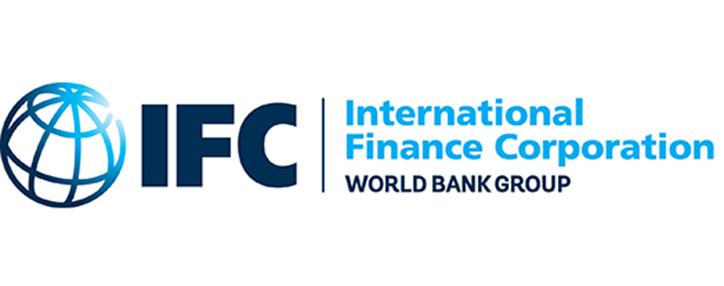IFC Project Manager – What needs to be done to ensure inspectors guide businesses instead of punishing them?
07.11.2016,
12:02
Taking into account that reforming Armenia’s business inspection system is vital to increase the inflow of investments in the country, the Armenian government initiated a comprehensive reform of the business inspections process in 2009.

YEREVAN, November 7. /ARKA/. Taking into account that reforming Armenia’s business inspection system is vital to increase the inflow of investments in the country, the Armenian government initiated a comprehensive reform of the business inspections process in 2009.
IFC “Armenia Investment Climate Reform” Project Manager Arsen Nazaryan said the Concept on Inspection Reforms was developed with the assistance of the IFC Armenia Investment Climate Reform Project (Trade and Competitiveness, World Bank Group) in 2008.
Its main goal is to reduce the administrative and regulatory burdens of inspections on businesses and thus improve the business climate. There were also two additional objectives - improving health, safety and the environment; and minimizing costs by making inspections more cost effective.
“Substantial work has been done since 2009 to develop an enabling legislative framework, with significant reforms introduced over the past few years,” Nazaryan said. “Key achievements include the implementation of a risk-based inspection system, which allows supervision bodies to identify the businesses that pose a greater safety risk and thus concentrate more resources on helping those businesses minimize risks.”
A risk-based system groups businesses into three categories: low risk, medium risk, and high risk. The number of inspections for businesses in the low and medium-risk categories is reduced significantly, saving time and resources and making the system more efficient.
The reforms also introduced checklists specifying the aspects of a business that an agency is authorized to inspect. These limit the ability of individual inspectors to use their own discretion and thus reduce the potential for corruption.
Currently, 9 out of the 18 supervision bodies conduct inspections by using the checklists approved by the government decision, while there is a moratorium on other inspections. The risk-based inspections include health, energy, legitimacy control, environment, control of licensing requirements and conditions, control of audit activity, fire and technical safety control inspectorates, the food safety state agency, and the market surveillance inspection body.
One of the changes is the shift in the inspections mindset from a “punishing” role to a “guiding” role. Ongoing training of inspectors aims to ensure professionalism, integrity, consistency, and transparency of the process. The idea is to have an inspector guide businesses in their efforts to comply with the regulations rather than focus on “catching” them in non-compliance and punishing.
A risk-based inspection system thus benefits all parties involved, from businesses and consumers to inspection agencies. It establishes the rules of the game, rights and responsibilities for both inspectors and businesses, and at the same time saves businesses and the government time and resources. By streamlining the system, the government can ensure proper safeguards are in place while reducing the administrative burden on companies, allowing them to devote saved resources to growing their businesses and ultimately creating more jobs.
However, the process could not be considered as completed. For example, there is need to review the acting Law on Inspections. To successfully coordinate reforms, it is vital to establish the culture of regular dialogue between private sector representatives and inspectorates.
International experience also suggests that organizing regular working groups, informal discussions, workshops, and seminars is important to build an atmosphere of mutual trust and understanding between the main stakeholders in both the public and private sector and boost reform efforts. This creates a better opportunity for the private sector to understand changes in their environment, and help policy makers get practical and real insights and be able to adjust the reform agenda if needed.
“It is vital too that regulatory changes do not stay on paper, but are translated into practice and that businesses understand their rights, the inspection reform details, and their responsibilities under the new system. A well-designed and professionally launched public awareness campaign is vital to build a consensus and foster the participation of stakeholders in the reform process. This must be accompanied by regular training sessions to explain the peculiarities of new inspection rules and regulations to the business community,” Arsen Nazaryan said. --0---
IFC “Armenia Investment Climate Reform” Project Manager Arsen Nazaryan said the Concept on Inspection Reforms was developed with the assistance of the IFC Armenia Investment Climate Reform Project (Trade and Competitiveness, World Bank Group) in 2008.
Its main goal is to reduce the administrative and regulatory burdens of inspections on businesses and thus improve the business climate. There were also two additional objectives - improving health, safety and the environment; and minimizing costs by making inspections more cost effective.
“Substantial work has been done since 2009 to develop an enabling legislative framework, with significant reforms introduced over the past few years,” Nazaryan said. “Key achievements include the implementation of a risk-based inspection system, which allows supervision bodies to identify the businesses that pose a greater safety risk and thus concentrate more resources on helping those businesses minimize risks.”
A risk-based system groups businesses into three categories: low risk, medium risk, and high risk. The number of inspections for businesses in the low and medium-risk categories is reduced significantly, saving time and resources and making the system more efficient.
The reforms also introduced checklists specifying the aspects of a business that an agency is authorized to inspect. These limit the ability of individual inspectors to use their own discretion and thus reduce the potential for corruption.
Currently, 9 out of the 18 supervision bodies conduct inspections by using the checklists approved by the government decision, while there is a moratorium on other inspections. The risk-based inspections include health, energy, legitimacy control, environment, control of licensing requirements and conditions, control of audit activity, fire and technical safety control inspectorates, the food safety state agency, and the market surveillance inspection body.
One of the changes is the shift in the inspections mindset from a “punishing” role to a “guiding” role. Ongoing training of inspectors aims to ensure professionalism, integrity, consistency, and transparency of the process. The idea is to have an inspector guide businesses in their efforts to comply with the regulations rather than focus on “catching” them in non-compliance and punishing.
A risk-based inspection system thus benefits all parties involved, from businesses and consumers to inspection agencies. It establishes the rules of the game, rights and responsibilities for both inspectors and businesses, and at the same time saves businesses and the government time and resources. By streamlining the system, the government can ensure proper safeguards are in place while reducing the administrative burden on companies, allowing them to devote saved resources to growing their businesses and ultimately creating more jobs.
However, the process could not be considered as completed. For example, there is need to review the acting Law on Inspections. To successfully coordinate reforms, it is vital to establish the culture of regular dialogue between private sector representatives and inspectorates.
International experience also suggests that organizing regular working groups, informal discussions, workshops, and seminars is important to build an atmosphere of mutual trust and understanding between the main stakeholders in both the public and private sector and boost reform efforts. This creates a better opportunity for the private sector to understand changes in their environment, and help policy makers get practical and real insights and be able to adjust the reform agenda if needed.
“It is vital too that regulatory changes do not stay on paper, but are translated into practice and that businesses understand their rights, the inspection reform details, and their responsibilities under the new system. A well-designed and professionally launched public awareness campaign is vital to build a consensus and foster the participation of stakeholders in the reform process. This must be accompanied by regular training sessions to explain the peculiarities of new inspection rules and regulations to the business community,” Arsen Nazaryan said. --0---



